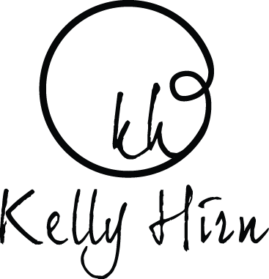Professional growth and professional development have really evolved over the years. It used to be enough to just say you were going on vacation for a few days, er, I mean, to a conference. You would show your boss the brochure and the promotional materials and that was proof that you learned and grew. Then, people started focusing on classes, seminars, books, and mentorship. At least with these you are held accountable for learning the information shared. This is movement in the right direction, but is it really professional development? I’d say not.
What is professional growth and why is it important?
Professional growth and development is the application of skills and experiences to benefit you in your career now, and in the future. That means if Coastal Conference Carl goes to that sales conference in Miami, he may have learned something, but it’s not development until he applies it. I’m not just picking on spending money for development either. It also means that is Perceptive Penny Pincher listens to a podcast and does nothing with the wealth of knowledge she’s absorbed, it’s also not professional growth. Once Penny and Carl put their newfound information into action, then they are growing and developing professionally.

Examples of professional growth.
You may know a Penny or Carl, but let’s use a real example for a minute. Years ago I was working with a client who was struggling in his work. He wasn’t leading well. His teams weren’t hitting their objectives. Now his boss wanted him to focus on leadership and influence, so I was asked to step in and work with him. Right off the bat you could see he had a laid-back style. He would communicate goals as if they were recommendations and then gave the team autonomy, which really meant he shared the recommendation and then never followed up for progress. Nothing was getting done because he didn’t want to seem like the heavy and wouldn’t be clear in expectations.
He and I worked together for a few sessions, and I realized very quickly that he wasn’t putting any of my recommendations into practice. There was always an excuse on why he hadn’t executed on what we discussed. It got to the point that I didn’t want my name associated with his leadership. So, I asked what the issue was. He said, things were going ok and what I was recommending would ruffle feathers. He didn’t want to do that. After we recapped that initiatives were falling flat and his boss said he would benefit from coaching I explained, this is where you get the knowledge but without applying it, it’s pointless. Slowly he started incorporating changes. He would give direct feedback, create firm deadlines, and have a little more fun with the team rather than leaving them to their own devices.
Moral of the story?
His development came into play when he applied what we discussed. Not when I coached him in what to do and why. Once he’d tried a few of the skills, then we could talk about adapting them to his style and still get results. He was growing in the job he was in and developing skills that would help him in future roles.

Photo by Kampus Production on Pexels.com
What are professional development goals?
Setting professional growth and development goals is the first step in being more intentional about your development. It means that you’ve narrowed in on a specific skill that you’d like to build. This is where most companies start (and ultimately stop) with development. This is better than say choosing a class out of a list that you’d like to take or having a book to read assigned to you. Setting the goal means that you chose what you wanted to improve in and then you’d select the best way to learn the skills and apply them.
Sometimes this means selecting a skill, like communication, and simply reflecting and adapting. My goal a few years ago was to improve my written communication skills. I am naturally a pretty direct person and in email that can come across as abrasive, which is never my intent. At the same time I was also trying to develop a culture of vulnerability within my teams. These two things weren’t intended to be linked but turned out to provide a great opportunity to apply knowledge in both. If you want to learn all about this story, click here to check out the YouTube video that goes with this blog article.
What is a professional growth strategy?
A professional growth strategy or a professional development plan (PDP) takes the goal we just talked about and cranks it up to 10. A strategy means that you have a full plan on how to achieve this goal. Your strategy is a structured plan involving a vision, goals, action steps, and communication with your network. Having a set strategy that is communicated and tracked is the best way to see it come to fruition.
How do you implement a professional development plan (PDP)?
A growth strategy sounds intimidating. There are a lot of moving parts. If you’re used to your organization simply recommending classes, books, or projects and hoping you grow from them, it is a lot. In those instances, implementing a PDP is almost development in itself. Click here to get a copy of my development plan template. You’ll be able to plug and play your own information. Just like with my client, I can share the knowledge. It is up to you if you will implement to grow and develop for yourself.

Great article which highlights how important application is. I appreciate that clarification. I am dedicated to on-going learning and applying what I learn. Not all the people I have coached have been will to go that extra (crucial) step!
Thank you for your wisdom and experience!